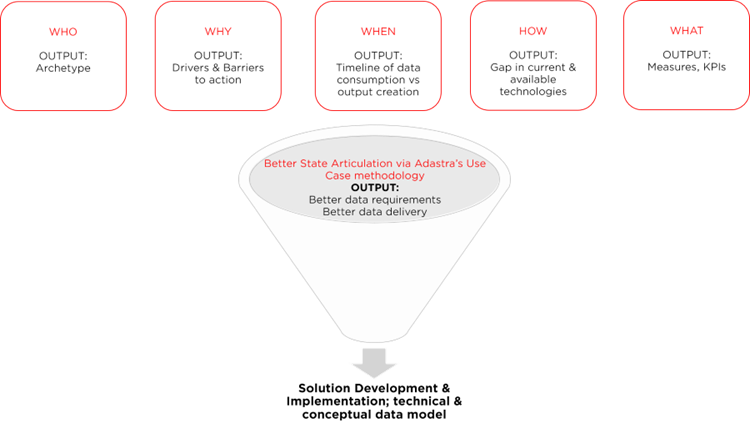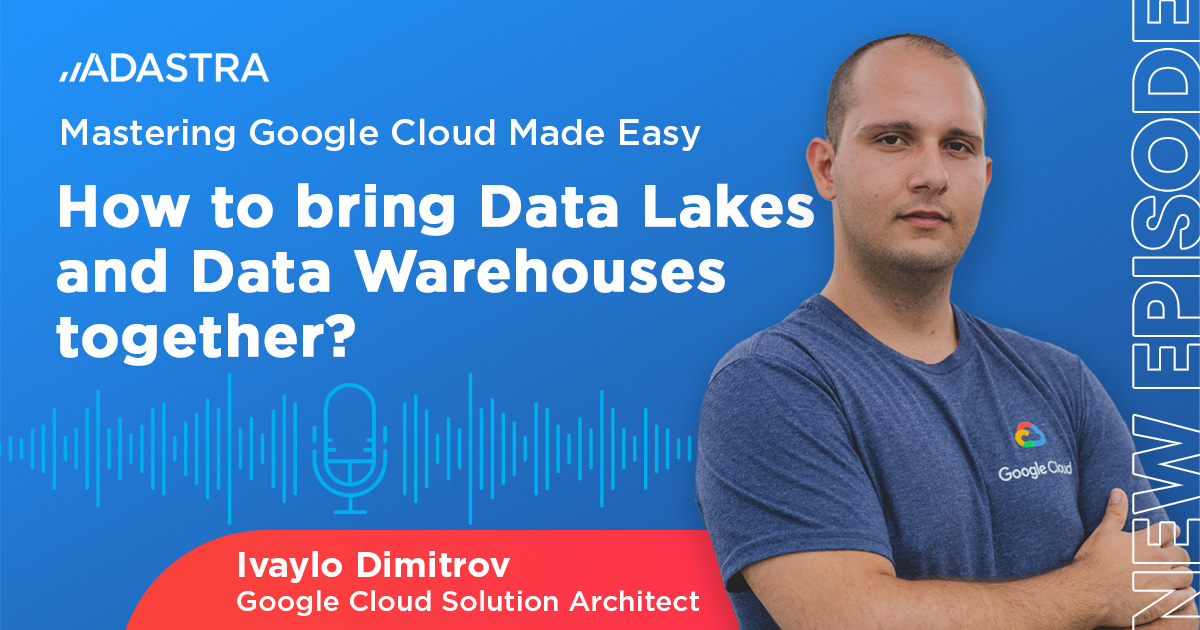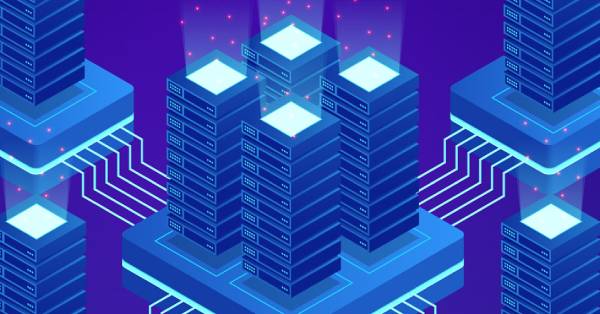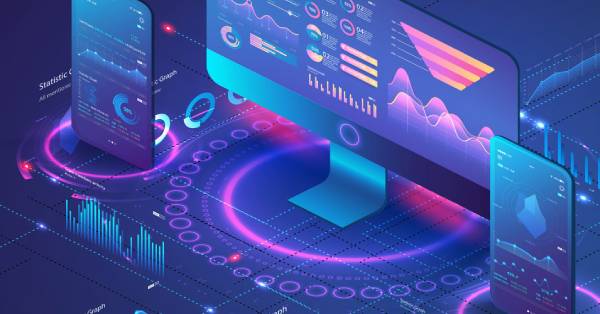Insights
Business Information Experience (BIx) – The Future of Data and Business Information Consumption
October 11, 2020
Imagine, if you will, in a not too distant future, the following scenarios:
An avid skier gets off the gondola and is at the top of a run. It is his first visit to this resort and his first ski run of the day. He has seen the maps of the runs, looked at the weather and temperature posted at the entrance, as well as the snow condition. He now projects, through his smart watch or smart device, on the snow a 3-D image of the run which highlights icy patches, ruts, hidden bumps and high traffic areas.
A shopper has already loaded a list of items on their smart device. As they enter the grocery store, data is exchanged between the store’s system and their device. The device highlights the most efficient route to complete the shopping trip and on which shelf or area the items can be found. As the shopper continues the trip through the center of the isle and comes to a shelf, an illuminated shelf talker highlights that the item is out of stock but that an order has been placed and the item in question will be delivered to their house in the next few hours.
An executive is at home, getting ready for the day. Being a multitasker, the executive asks, “Alexa, please provide me yesterday’s sales numbers.” The smart device communicates verbally the day’s sales, by key product and indicates if trends are on track. The device also highlights that there are back orders for a number of items and that is appears to be related to a distribution issue between warehouses. The executive makes a mental note to follow-up with the appropriate individuals.
These examples have many points in common. They all rely on frictionless data exchange between various systems. They also rely on technology to enable the exchange and consumption of the information. What sticks out with all these examples is the method in which the end user consumes and internalizes the information. Enter BIx or Business Information Experience. The essence of the examples presented here is the ability to consume information, when the user wants, on the technology that best responds to the ‘Need State’ of information consumption. Like Customer Experience or User Experience, BIx is essentially the development of the optimal information consumption juxtaposed against the Need State of that information or data point.
The Evolution of Data Visualization
Throughout time, the consumption of information and data has been required to support decision making. Visualization and communication of information continues to evolve, and it is of note is that modern infographics date all the way back to the late 1700s. The way in which information is presented is paramount to ensure that it is well understood. While Fred R. Barnard’s phrase “A picture is worth a thousand words” still holds true, when it comes to data and information, having the right picture, and not simply any picture, is essential.
In recent past, there were divisions within organizations that were solely dedicated to the creation of visualizations, and followed well documented rules on developing the appropriate visualizations. Technological advances and the development of BI tools and Self Service BI environments have empowered individuals at all levels of the organization to create impactful visualizations to convey their message. This and the conversion of the outputs to any device have democratized information consumption. However, this only partly answers the question of consuming information with the optimal experience.
BIx Journey Mapping and Solution Development
Zelusit has developed a process by which it assists organizations to develop and deliver the right experience for the consumption of data and information. It is grounded on the tenets of mapping out the customer (in this case, a business user) journey. For this exercise, however, the focal point is the intersection of the type of information available and the consumption Need State, which is then juxtaposed against the optimal technological solution to create a Business Information Experience. In simple terms, through BIx, we ensure that business users will get information that they need, at the right time, through the right source, and with the right experience.
At its core, the BIx process begins with mapping out consumption Need States. Are these informational, do they require decision making, are they inputs into additional data points which then leads to a holistic picture needed to arrive at a decision?
To answer these questions, we typically start our search for these answers by engaging with the executive/leadership team to understand where the organization presently is from a data visualization perspective, to where they need to reach. This also helps us uncover possible friction points from a technical, data and cultural standpoint. For this prepping step, we rely on the below questions:
- Who is consuming the information: An in-depth investigation into the individual(s) will cover their background, role, position in the organization and provide us with an archetype of the user. This will also give us an understanding of the technologies they are familiar or comfortable with, and how easily they can adopt newer solutions. In the third scenario we described at the beginning of this article, for instance, this would mean collecting information about the executive’s role and responsibilities, the people he reports into and the function he performs in the organization.
- Why is the information needed: This step covers outlining why this information is needed and the business processes behind it. It will include evaluation of the resulting decisions that will be actioned based on the information consumed, for instance, monitoring sales trends and uncovering delays or inconsistencies. It will also offer us insight into the drivers and barriers to action. For example, in the executive’s case, why is it important for him to have information about the sales numbers? He might need to stay on top of this information to ensure the organization is on track to achieving quarterly goals, identify roadblocks or delays and make sure that his team is performing well. Or he might want to see how one product line is doing in comparison to another, so that he can get the marketing team to optimize their campaigns.
- When will this information be consumed: This question pertains to when the information is typically needed, the frequency, and situation in which it will be used. A review of the time of consumption relative to the availability of information and decision timeline will provide us with a timeline of optimal data consumption vis-a-vis output creation, such as perhaps setting up alerts or notifications for real-time updates. For the executive, this information might be needed on a weekly basis, so he is well-informed for the organization’s management meetings, or it might be daily with special alerts set for when sales of a product slip below the daily average.
- How will this information be consumed: This will entail a review of current consumption methods and output production and highlight gaps in adoption of available modern technologies. These gaps will ascertain if the solution can be implemented on their existing devices or if the enterprise will need to bring in new technology to enhance user experience. Again, the executive’s way of consuming data (via Alexa, in this scenario), might have been different if he were less familiar with the new tools. Alternatively, he could have been in a role that required him to travel a lot and stay updated on the information all through the day, making his smartwatch, perhaps, a better alternative.
- What information is required: Finally, it is imperative to look at the information being consumed, as well as the data systems and transformations. This will help us identify aspects of measurements and KPI’s linked to that information. Our executive in the scenario, for instance, is interested in daily sales numbers, back orders and distribution figures, but the solution would not give him the desired, accurate, up-to-date information if the staff was not updating their systems on a daily basis.

Once we have gathered these five pieces of information, we can apply Zelusit’s Use Case methodology to articulate a “Better State” roadmap both in terms of data and delivery. By the end of this exercise, we would have a clear picture of improvements needed in data requirements as well as delivery of data to better achieve the user’s purpose, in a manner that best leverages existing data assets in an efficient manner.
With all these inputs, Zelusit’s experts will be able to create a technical and conceptual data model. Finally, our team will develop and implement a customized solution that will ensure a smooth, reliable, timely Business Information Experience for your users at every level. By keeping in mind your technical requirements, we can accelerate your journey towards data democratization, so that information is accessible and available at the right time and in the right way for your people to make the right decisions.
In some cases, organizations may already have the latest technologies, but they might not be delivering the experience you had anticipated. This could be because you may be missing some technical requirements, data assets, expertise or just the cultural motivation to properly leverage them. Our customized solutions will take into account not only your organization’s requirements, current technical capabilities and future-readiness, but also the cultural perspective, so as to facilitate easy adoption and adherence to the new solution. In this regard, BIx essentially encapsulates the amalgamation of data, technology, visualization, and experience to ensure that you are able to extract the best value from your data and accelerate your organization’s growth.
Embark on the BIx Journey with Zelusit
It is imperative to underline that BIx is a journey and that, much like technology and the business environment, the business information experience evolves over time. As your organization’s level of comfort with the information experience increases, you will need to constantly re-evaluate the five inputs to ensure that the outcomes meet the overall maturity and culture of the enterprise. In the competitive business environment, what might be a great way to consume data today, may be outdated or inadequate to meet your users’ needs a few years from now.
At first glance, the three examples we started our story with may seem futuristic, but the tools, models and devices to realize them already exist. Often, organizations that are otherwise experts in their core domains face technical challenges or gaps in embracing, or even imagining, advanced solutions. For that reason, we are here to help. The possibilities of enhancing BIx are endless and with Zelusit’s expertise, solutions like these can be created and implemented to fit your business needs and give your team a winning edge.




